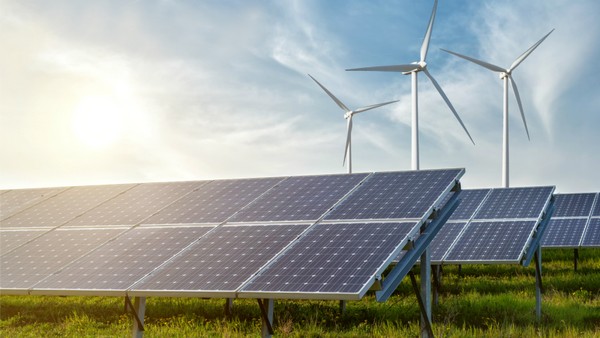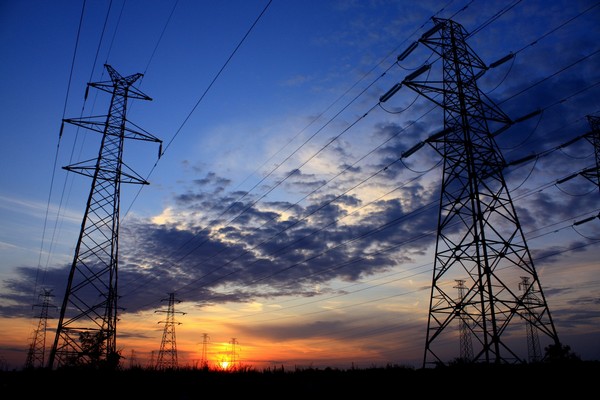
Tenders are considered one of the most successful measures of recent times in the electricity-energy sector. A tool that has boosted competition among companies and has added new players to the market, such as NCRE. However, despite the good results of this process, experts in this report highlight some of the main challenges that the sector must face in order to improve the model.
Electricity supply bidding: Open door to competition
It was in 2005 when a new bidding scheme for supply contracts for distribution companies was introduced in the Chilean electricity regulatory model. The idea was to establish a contract market scheme that would not only encourage the development of supply to ensure future electricity supply, but also provide certainty to investors.
The first bidding process was carried out in 2006 thanks to the so-called Ley Corta II. The result was successful with reasonable prices and the volume of energy tendered was covered. However, in 2012, prices were very high and the requirements of the distribution companies were not met. A different scenario occurred in October 2015 when 38 bidding companies participated and energy was awarded at an average price of US$79.3/MWh.
Precisely in January 2015, Law No. 20,805 was published, which improved the electricity supply bidding system. The idea? Extending the deadlines for the start of supply, which reduced the risks for bidders, in addition to including partial hourly blocks, which allowed a greater participation of solar projects.
But 2016 marked a before and after. In that year, the government carried out the most successful bidding process for the supply of electricity to regulated customers on record. There were 12,430 GWh that were awarded at a record average price of US$ 47.6 per MWh, 40% lower compared to the process that took place in 2015 and 63% in relation to the auction that was generated in 2013, when the average price reached US$ 129 per MWh.
For the executive secretary of the National Energy Commission (CNE), Andrés Romero, this tool structurally changed the country’s energy market. “What we see today is a competitive and dynamic electricity market, in which new players have entered, allowing the incorporation of different projects and generation technologies”, says the authority.
The figures are proof of this. If in 2012 there were a total of 112 generating companies in the SIC, and 9 in the SING registered in the CDECs, in 2016 this number increased to 206 and 19 respectively, largely due to tenders.
According to Rodrigo Jiménez, general manager of the consulting firm Systep, although the majority of electricity production still comes from a few companies, “the tenders have played an important role in attracting smaller companies that have added greater competition to the generation sector”.
When analyzing the scenario in which the electricity market was at the time of the discussion of this law, the CNE affirms that the project was able to consider the mechanisms required to ensure that the energy demanded by distributors is duly contracted. Thus, in the event of unexpected increases in demand, the state agency assures that it now has the necessary tools to be able to contract this additional energy and avoid conflicts and controversies regarding the supply of distributors without a contract.
“However, the scenario of a drop in demand from regulated clients due to their transfer to free clients was not in sight at the time the law was discussed. Therefore, perhaps one element to be improved would be to incorporate tools that allow dealing with an unexpected drop in regulated demand”, says Andrés Romero, of the CNE.

The tenders have allowed a significant growth of NCRE. Without going any further, last year 52% of the energy tendered was awarded directly.
Greater promotion of NCRE
If there is one fact that is evident, it has been the successful irruption of NCRE in recent times. Without going any further, last year this type of energy was directly awarded 52% of the energy tendered. The reasons for this success are diverse, such as the low costs worldwide and the country’s exceptional natural conditions for its development.
However, in the opinion of Rodrigo Castillo, executive director of the Association of Electricity Companies, the prominence achieved by NCRE is largely due to the bidding system, “which, without favoring them, does give them an equitable space for development”.
This is confirmed by the Chilean Renewable Energy Association (Acera). The association’s executive director, Carlos Finat, says that the supply tenders have been very important, “because the fact that the entire process is public has been the strongest refutation of what some sectors have insisted, stating that NCRE would be expensive”, says Carlos Finat, executive director of the association.
But some industry critics have pointed to the cost overruns that the system has had to bear when NCRE ceases to operate. This argument is refuted by the CNE, which points out that neither the National Electricity Coordinator nor the CNE itself has a report that proves that the current and projected penetration of NCRE could generate a problem of security or instability of the system.
“We have no doubt that the operation of the electricity system will be safe with the current and future incorporation of clean energy sources,” says the executive secretary of the institution.
This would be confirmed by a study prepared by the Ministry of Energy, which concluded that the national electricity system today has the resources to add 68% more renewable energies, where this type of energy could represent more than 40% of the national matrix.
What’s more. Analyses carried out by public and private sector specialists show that it would be efficient to integrate wind and photovoltaic energy, which would represent 30% of the annual national electricity generation.
A different point of view is expressed by the consulting firm Systep, which points out that there is indeed a cost, due to the intermittency of wind and solar energy, associated with the reserve required for the system to operate safely. In this way, “it is expected that fast response power plants, as well as battery and storage systems, will be resources that can complement renewable energies,” says Rodrigo Jiménez, general manager of Systep.
And if there is one aspect that, in the executive’s opinion, cannot be neglected, it is that the regulatory framework should provide for adequate compensation to the providers of these complementary services, and that the costs should be allocated appropriately. Thus, adds the Systep specialist, “the right signal would be given to those who do not contribute to the flexibility of the system, so that the benefit of more economical NCRE generation is greater than the increase in costs of complementary services”.
System at risk?
Another of the industry’s darts is related to the low bid price that was reflected in the last bidding process, which was around US$ 47.6 per MWh. A considerable drop that, according to experts, could jeopardize the viability of the electricity market.
But the CNE says otherwise, arguing that in Chile there is a free entry market, in which supply and demand are shaping the conditions of equilibrium, so that so far there are no elements to warn about risks in the quality and security of supply in the future.
In turn, the delay in transmission lines is also another of the “ghosts” that threatens the start-up of energy projects and, therefore, the need for them to comply with the commitments agreed in the bids. In fact, the most complex section is the construction of the 500 kV Cardones-Polpaico line, as there is a significant risk of a delay greater than that noted in the audits.
However, this situation was foreseen by several project developers in past tenders, so most of the projects that have PPAs with distributors are not in the northern zone of the SIC, or enter a date when such line is operational considering a certain level of backlog.

The national electricity system today has the resources to add 68% more renewable energies, according to studies carried out by the Ministry of Energy.
“In any case, the SIC-SING interconnection will provide relief to that area, where, although marginal costs close to zero could be maintained, these would only occur during hours of high coincidence of primary generation resources”, explains the Systep representative.
The SIC, on the other hand, could also present complications due to congestion in the Valdivia area towards the south, particularly from 2022, if all the projects awarded power blocks are materialized on time.
What’s next
In January of this year, the CNE reported that the next national and international public bidding process would initially auction 4,200 GWh per year, starting January 1, 2023, for 20 years.
But following the results of the final 2017 electricity supply bidding report, the electricity demand projection for the period 2017-2037 for regulated customers experienced a drop. The reasons? Mainly due to lower expected growth, as well as the transfer of regulated clients to the free client regime as a result of a significant decrease in energy prices.
Thus, for this year’s October tender, supply contracts will start in 2024 and the amount of energy to be tendered will be 2,200 GWh. Despite the lower growth in demand, the process is expected to be competitive, since it is estimated that the average price could be lower than that of the last bidding process. This scenario could occur given that the level of energy to be tendered is small and there are still new projects looking for opportunities to obtain contracts.
In the meantime, one of the challenges under discussion is to improve the issue of guarantees. Although the doubling of the amount of the guarantee bonds has already been considered, they still represent a minor amount with respect to the total investment involved.
“The basic problem is to incorporate mechanisms that avoid or reduce the participation of speculators, since today there are doubts about the execution of projects that supported supply offers at very low prices,” concludes the executive of the consulting firm Systep.





